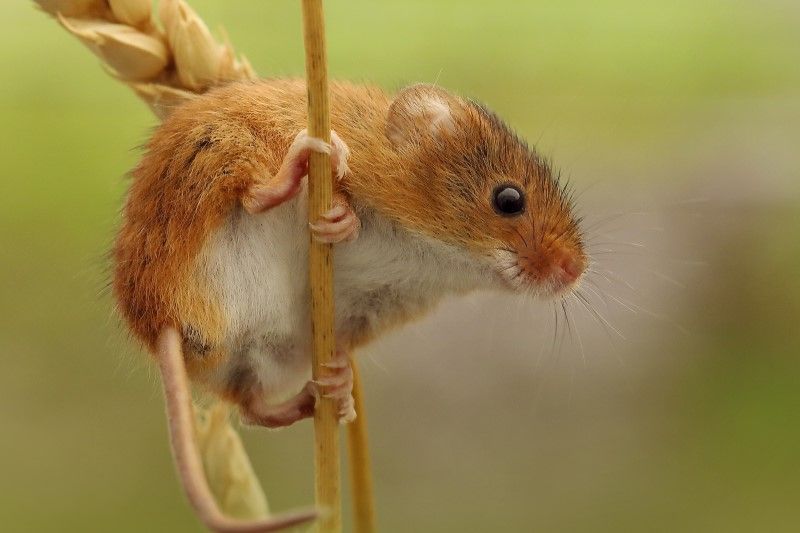Harvest mouse

Status
Native, widespread over most of England and parts of Wales
Population
566,000
Scientific name
Micromys minutus
Harvest mice are the smallest rodents in Europe and the only British mammal to have a prehensile tail, able to grasp plant stems as they move through long vegetation. They have a reddish-yellow coat with a distinct white underside, small hairy ears and a much blunter nose than other mice. They are mostly nocturnal, although are active during the day in warm summer months. They build several grass nests throughout a season, for breeding, sleeping and resting. Harvest mice are less active in winter but do not hibernate; they stay close to the ground for warmth and insulation, and store food to sustain them through the winter months.
Head-body length: 5 – 8cm
Tail length: As long as the head and body
Weight: 5 – 11g
Lifespan: Up to 18 months
Reproduction
Harvest mice breed between May and October, producing several litters in a year. Litters of 3 – 8 pups are born after a gestation of 17 – 19 days, females give birth to 3 – 8 young. The young are weaned by about two weeks.
Diet
Grass seeds, fruit, berries, grain and sometimes insects in the winter.
Habitat
Cornfields, hedgerows, reed-beds, brambles, long grass and sometimes open fields.
Predators
Barn owls, stoats, weasels and crows.
Threats
Severe winters and starvation; farming practices such as combine harvesting and stubble burning; and pesticides.
Conservation status
GB Red List: Near Threatened (NT); least Concern (LC) in England and Vulnerable (VU) in Wales (there are very few records in Scotland).
Population size and distribution
GB population: 566,00 but there is a lot of uncertainty in the estimate. Locally, harvest mice can be common, but nationally, are rare. They occur mainly in southern and eastern England, with a few records in the Midlands, the north of England and southern Scotland. They are absent from Ireland.
Did you know?
Harvest mice shred grasses by pulling them through their teeth and use the strips to weave a hollow nest, about the size of a tennis ball, about 50 – 100cm above the ground and secured to grass stems.
